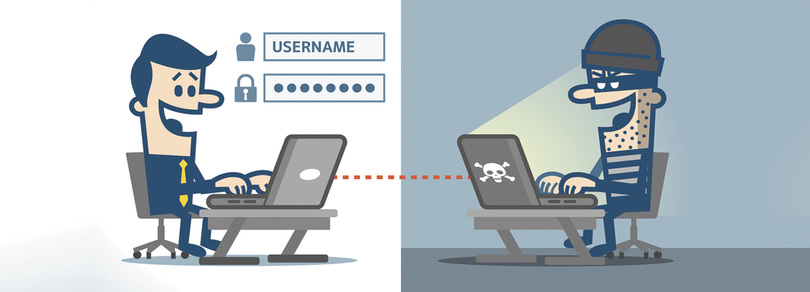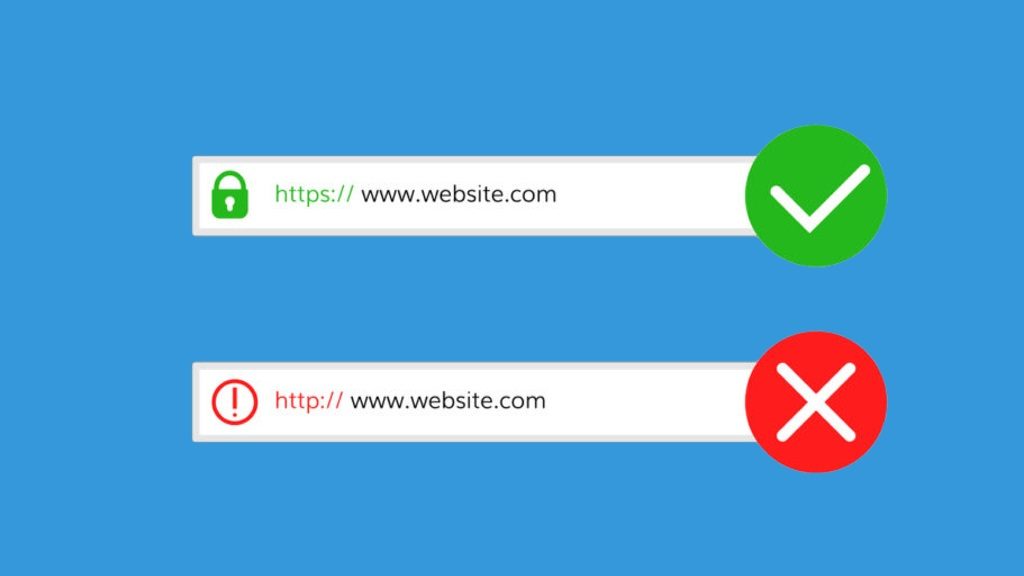Here we will talk about ways in which you can recognize secure websites that you can trust and spot the fake ones that are run by fraudsters who are out there to scam you.
No matter how wonderful the internet has gotten these days (and honestly, it is quite amazing when you think about it), a lot of things that happen online are downright SCARY. The anonymity and freedom that the internet provides also makes it a breeding ground for thieves and criminals. A lot of these bad guys are continuously evolving their methods to steal data. One of the oldest tricks in the online piracy playbook is a fake or scammed website.
If you have been around the internet for long enough, you are likely to have seen at least one of these, if not many them. Fake, fraudulent or scammed websites are created to trick you into giving up your personal or valuable user information and are typically designed in such a way that those who are not as attentive will fall right into the trap laid down by these sinister sites and their shadowy designers.
What kind of people are the prime targets for these fraudulent websites? Well, naive enough to fall for them, mostly.

What Kind of Data is Stolen by these Scam Websites?
Well, they are stealing everything you can think of, though these sites usually focus on getting their hands-on information which will allow them to make money, either in the short term or in a long time. As such, the kind of data stolen or the traps that are set up typically focus on:
- Private and Compromising information
- Physical address
- Usernames and passwords
- Social Security Numbers
- Bank Account Information
- Credit Card Information
As scammers are getting more and more sophisticated in their tricks, it is getting increasingly difficult to tell whether a website may be a scam or a passage to fraudulent material that has been put out there to steal your information. Here are a few simple things that you can look out for when you suspect that a website may not be completely trustworthy.
Check URL of the Website Against Page Content
Always check the URL if you have ended up on that page after clicking a link that redirected you there. This often is the case if you have received the link in one of the emails or you have clicked some link on an advertisement.
It may be the most apparent sign of spotting a fake. Scam websites often try to spoof the real ones, especially the big-name websites, to collect your username and password for those sites. These websites are commonly known as phishing websites. The name here should help you get a hint of what they do.
A phishing website is one that has been designed to lure you into thinking it is the original website and then gather your private and sensitive information once you have handed it over.
Make checking the URL of websites you visit a habit, especially if you land up on that website through an external link. At times, the link may look very similar to the real one with only some subtle differences, such as “www.face-book.com”. Look for things such as extra words, underscores or dashes in places where they would usually not be there.

Check for an SSL Certificate And a Lock Sign
If there is one thing that scammers hate, it is online security and the SSL/TSL certificates is one of them. Specifically, look for the green padlock symbol next to the website address.
If you get the green lock symbol representing the EV SSL Certificate, it means that the website owners have received a secure SSL/TSL certificate from a company authorized to sell them. Some security companies like Symantec (who are also the makers of Norton Antivirus) issue these certificates any after extensive background checks and verification of website ownership. While the primary use of these certificates is to prevent hacking, they can also be used to ensure that only legitimate websites can obtain them.
If you see the green lock symbol, that means the website owners have applied for and received a secure SSL/TLS security certificate from a company authorized to sell them. Some security companies, such as Symantec (makers of Norton Antivirus) issues these certificates after extensive background checks on the and verification of website ownership. The primary object of SSL is to keep away data theft and only legitimate website can obtain an SSL certificate.
Avoid Fake Sites that Claims to be Legitimate
Who does not want to get rich quick? It is just a part of human nature, but if you see a website that is advertising something that seems like a deal that may be too good to be true, then trust us: it is. There is no such thing as a legitimate gets the rich quick scheme. They do not exist, and even if there are, there will be a lot more people on it than you think, and you would know at least one of them personally. This also applies to those sites and advertisements that try to get you to sign up for what seems like an easy way to make money. These fake sites can steal your money.
Do Not Fall for Sites that Say You have a Virus or that you are I Trouble with The Law
The sites that are all about scare tactics are always a scam. Whether it is a popup or on the whole page, if the site claims that you have a virus and need to remove it right away, or that the FBI has identified you and you can pay your way out of the trouble, do not fall for it.
These messages and sites play on your fears and try to get you to hand over money or personal information. Also, your web browser is never going to be the place to find out that your computer has a virus. That is what virus scanners are there for. If you find any such web page, disregard it.
So, keep these things in mind and stay clear of any fake, fraudulent or scam websites.
Bad English:
If you visit a legitimate site, they take care of graphic, image or content provided on the website but in case of a fraudulent website, it may not happen as there may be bad English. It will look like written by a non-English writer. There may be tense or article mistakes in sentences that you need to identify it as these types of sites could be fake.
Contact Us Page:
When you visit a real website, you can see Contact Us page with full information like company name, address, phone number, email address (more than one) and map direction. But, if you do not find detailed information on the site except single email address, it is time to run away from such site as it may be a fake site.
Excessive Ads:
Ads are everywhere when you browse anything online but if there are too many ads on the website and it compels you to redirect by clicking on it then you should be cautious. When you click on such ads, it may redirect to a fake page that might you to enter confidential credentials.

Conclusion:
The above signs suggest users keep them away from such sites as they are phony websites and put you in trouble. The reason behind such a scam is awareness in people as many people do not understand these fishy tricks and become a victim of such schemes.













Leave a Reply